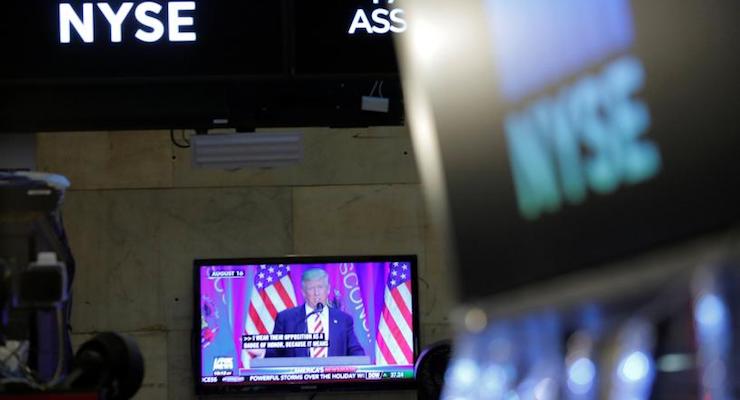

Then-President-elect Donald J. Trump is broadcast on a screen on the floor at the New York Stock Exchange (NYSE) in Manhattan, New York City, U.S. December 27, 2016. (Photo: Reuters)
Gallup’s U.S. Economic Confidence Index remained in positive territory and has since the election after 9 years of pessimism stuck in negative territory. The index–which is the average of two components, how Americans rate current economic conditions and whether they feel the economy is improving or getting worse–came in at +7 last week.
The survey surged to the highest level ever measured following the election and the inauguration of President Donald J. Trump. This is now the 14th week in a row that the index has been positive, a trend that began to show strength after the presidential election in November. It has since receded from its high, with the week ending Jan. 29 coming in at +8.
Last week, the current conditions component of the index came in at +13, with 33% of Americans rating the current economic conditions of the country as “excellent” or “good,” and 20% rating conditions as “poor.” This is largely unchanged from the week before, when 32% said conditions were excellent or good and 19% said they were poor. The economic outlook score for last week was +1, also unchanged from the prior week.
The Gallup U.S. Economic Confidence Index mirrors other major gauges showing a change from pessimism to optimism.
In February, Rasmussen Reports found that 50% of American adults now believe the economy will be stronger a year from now. That’s a 16-point jump from only 34% in October before the election and the highest measure since regular surveying began on the question in 2009 just after the financial crisis.
“Americans are far more optimistic about their economic future since Donald Trump’s election as president,” Rasmussen wrote.
The Survey of Consumers, a closely-watched gauge of consumer sentiment from the University of Michigan, hit a 12-year high following the election. It continued its post-election rally in January.
“Consumers expressed a higher level of confidence January than any other time in the last dozen years,” said Survey of Consumers chief economist, Richard Curtain. “The post-election surge in confidence was driven by a more optimistic outlook for the economy and job growth during the year ahead as well as more favorable economic prospects over the next five years.”
Meanwhile, the Dow Jones Industrial Average (INDEXDJX:.DJI) topped 20,000 and closed above it for the first time ever in U.S. history on January 25, only days after the inauguration. On Tuesday, the the Dow hit a new intra-day high at 20,757.64 as profits from U.S. retailers pushed all three major indexes to brand new highs. Wal-Mart Stores Inc. (NYSE:WMT) reported better-than-expected quarterly comparable store sales, making the company the biggest boon to the Dow.
The president invited top U.S. retail CEOs to the White House last week, which sent shares to new highs before earnings reports were released.
The S&P 500 (INDEXSP:.INX) climbed 0.86%, or 8.99 to 2,360.15, after setting a new high at 2,366.24. Nine (9) of the 11 major S&P 500 sectors were up, while real estate and utilities were the outliers for once.
The Nasdaq Composite (INDEXNASDAQ:.IXIC) was up 10.90, or 0.19% to 5,848.82 after hitting a new high of 5,867.89.
[social-media-buttons]



